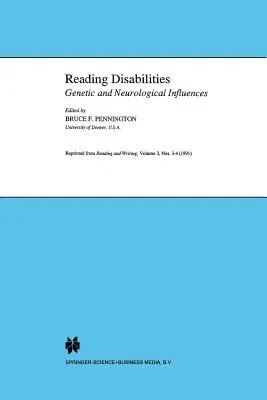This book is unique in that it brings together in one place an account
of recent advances in our understanding of the biology of dyslexia. It
grew out of a Rodin Remediation Foundation International conference held
on this topic in Boulder, Colorado in 1990, which included most of the
world's experts on the genetics and neurology of dyslexia. Ten years ago
a volume on this topic would scarcely been possible, and now we have an
emerging, comprehensive neuroscientific understanding of this complex
behavioral disorder that goes from genes to brain to behavior. Building
on recent advances in the understanding of the cognitive phenotype of
dyslexia, these authors present new data on both the etiology and brain
mechanisms underlying that phenotype. Reading disability or dyslexia has
a high familial recurrence rate, and is partly heritable. Genetic
linkage studies are beginning to identify the possible locations of
genes influencing this phenotype. On the neurological side, several
independent studies have found neuroanatomical differences in the
dyslexic brain, which are due to early changes in brain development.
Thus, contrary to the views held by some educators that dyslexia is a
myth, the results presented in this book firmly establish dyslexia as a
real, biological condition.
This book is relevant to researchers and practitioners concerned with
both normal and abnormal reading development.


